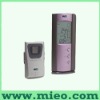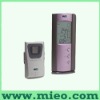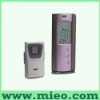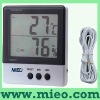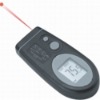PID TEMPERATURE CONTROLLER INSTRUCTION MANUAL XMT7100 1/32 DIN
Caution
This controller is intended to control equipment under normal operating conditions. If failure or malfunction of it could lead to an abnormal operating condition that could cause personal injury or damage to the equipment or other property, other devices (limit or safety controls) or systems (alarm or supervisory) intended to warn of or protect against failure or malfunction of the controller must be incorporated into and maintained as part of the control system.
- The front panel (Display and Key buttons) are dust and splash proof. Additional protection IP rating and performance
- This controller carries a 1 year warranty against manufacturer defacts repair and replacement of parts (except wear and tare items) at our factory is free Of Change during the warranty period.
1. Specification
2. Front Panel and Operation
3. Wiring
Thermocouple sensor (left) and RTD sensor (right)
3. Parameter Setting
For safety reasons, the controller parameters are divided into three groups with different pass codes. You should only give the code to those who have the responsibility and knowledge of how to properly change it. Code 0089 contains the parameters for system configuration that may need to change during the initial set up. Code 0036 contains the parameters for tuning performance. Code 0001 is for controlling temperature and alarm settings.
3.1 System Configuration Parameters (accessed by code 0089)
The system configuration parameter s is listed in table 1. To change the parameters, press "set", enter code "0089" press "set" again. Then, follow the flow chart
(1) Press "set" to enter setting mode;
(2) Press ">","up" and "down" to enter parameters;
(3) Press "set" to confirm;
(4) Press "up" or "down" to select the new parameter.
3.2 PID Parameters (accessed by code 0036)
The PID parameters are listed in table 3. To change the parameters, press "set", enter code "0036", press "set" again
Table. 1. System configuration parameters
Note 1. The controller is preset for K type thermocouple input. If any other type of sensor is used, the Inty value needs to be changed to the corresponding symbol as shown in Table 2.
Table 2. Temperature sensor code
Note 2. The value of outy determines the control mode. When it is set to:
0 - Relay J1 as alarm output; SSR output disabled.
1 - Relay J1 as PID controlled relay contact output; SSR output disabled.
2 - Relay J1 as alarm output; SSR PID control output.
3 - Relay J1 as alarm output; SSR On/off control output.
4 - J1 as On/off control relay contactor output. SSR output disabled.
5 - J1 as Limit control output.
6 – Relay J1 as alarm output; SSR for Limit control output.
3.3 Temperature setting and Alarm setting (accessed by code 0001)
The temperature and alarm parameters are listed in table 4. To change the parameters, press "set", enter code "0001", press "set" again. Figure 5 is the parameter flow chart.
Note 4. The autotune offset will shift the SV value down by the Atdu value during the auto tune process. That will prevent the system from damage due to overheating during the autotune.
The values of the P, I, and D parameters are critical for good response time, accuracy and stability of the system. Using the Auto-Tune function to automatically determine these parameters is recommended for the first time user. If the auto tuning result is not satisfactory, you can manually fine-tune the PID constants for improved performance.
Note 5. Proportional Constant (P): P is also called the proportional band. Its unit is the percentage of the temperature range. E.g. for a K type thermocouple, the control range is 1500 degree C. P=5 means the proportional band is 75 degree C (1500x5%). Assuming the set temperature (SV) = 200. When integral, I, and derivative, d, actions are removed - the controller output power will change from 100% to 0% when temperature increases from 125 to 200 degree C. The smaller the P value is, the stronger action will be for the same temperature difference between SV and PV
Note 6. Integral time (I): Brings the system up to the set value by adding to the output that is proportional to how far the process value (PV) is from the set value (SV) and how long it has been there. When I decrease, the response speed is faster but the system is less stable. When I increase, the response speed is slower, but the system is more stable. When I=0, the integration is turned off. It becomes to a PD controller that is useful for very slow system.
Note 7. Derivative time (d): Responds to the rate of PV change, so that the controller can compensate in advance before |SV-PV| gets too big. A larger number increases its action. Setting d-value too small or too large would decrease system stability, causing oscillation or even non-convergence. Normally, d is set to 1/4 of the I value.
Application Example: Typical wiring for high precision control
Details photo of temperature controller:


